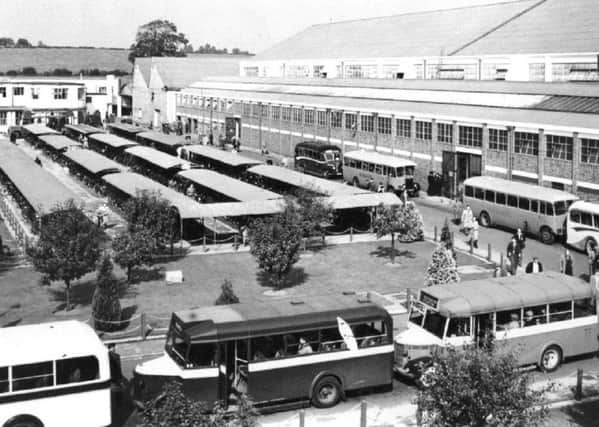Look Back with Little: Hotel plan could give site vital role once more


Just how important is this development can be traced back to 1951 when George Braggins, president of the local chamber of commerce, penned a brief but clear message for visitors to the town’s industrial exhibition. It was worded ‘Our job today … is to endeavour to bring Banbury to the notice of the world as a growing industrial centre’. His remarks owed much to the establishment and growth of the Northern Aluminium Company in the 1930s.
Subsequent development by British Alcan and later companies such as SAPA ensured that the aluminium works site has been a landmark for the town that imparted recognition to this part point as a key entry to the town.
Advertisement
Hide AdAdvertisement
Hide AdThis was highlighted in a 1954 edition of the in-house publication Noral News. Compilers reported a visit to the factory of the travel writer SPB Mais. He was motivated to select Banbury as a country market town most characteristic of England.
Following a tour of the works, Mais remarked that ‘aluminium has come to stay and not only as a material for saucepans’. He might well have added that Alcan was a key producer of the metal during World War II, when aluminium produced by the firm was used in the manufacture of Spitfire s.
In 2008 Sam McGregor contributed an article to the Banbury Guardian issue of July 3 concerning efforts to achieve conservation recognition for as much as possible of the factory. The battle was spearheaded by Cllr Kieron Mallon and colleagues and supported by Banbury Civic Society. In the final analysis Heritage England agreed to Grade 2 listed status for the 1937 gates, the memorial garden and the office block.
The office buildings completed in 1938 in art deco style, which was evident in a majority of the construction features. Richard Hartree (a senior member of the company 1954-1990), in his article for Cake and Cockhorse Volume 20 Number 1, considered these in terms of the versatility of aluminium. The metal was used for windows frames, revolving doors, step edging and skirting boards.
Advertisement
Hide AdAdvertisement
Hide AdHartree’s conclusion has some highly significant comments on why the factory should remain in the memory. ‘It was the first global company to play an influential role in the town. Moreover it exercised a commanding presence in Banbury’s life in the 1940s, ‘50s and ‘60s.
With the factory mills long since gone, it is more than ever important to ensure that the office block is incorporated in any future development. The Civic Society had hoped for wider site availability. In August 2009 spokesman Robert Kinchin-Smith commented: ‘I fear the site’s owners are sadly mistaken in believing it will be easier to market a derelict, contaminated, brownfield site than a site already developed with large, versatile attractive buildings ready for almost immediate use’. In response Michael Gibbard, portfolio holder for Cherwell Council’s planning and housing expressed disappointment the Heritage listing did not include the rolling mills.
In conclusion it is important to explore why the hotel and spa proposal could be a welcome development for Banbury. An answer was revealed in the Times’ Bricks and Mortar supplement for Friday, June 8. The relevant article was entitled ‘The lucrative locations for downsizers’. In it David Byers identifies the sort of places where people seeking smaller properties might find it. His solution was market towns because they have ‘many conveniences of urban living in a tranquil setting’.
An alternative way of looking at the suggested use of the site is Banbury’s need for a reimaging of the town. Fostering tourism is a much favoured route as an alternative to dependence on markets. In the 1930s the centrally located Red Lion and White Lion hotels were AA listed and recommended by Bradshaw. A hotel at the northern gateway with conference facilities and a spa could meet with considerable favour.